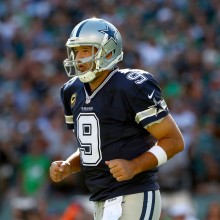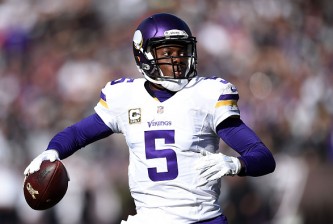
From the right point of view, it seemed like the 2011 Green Bay Packers might be even better than the 2010 version that almost missed out on the last playoff spot in the NFC before catching fire in the playoffs and winning the Super Bowl. Aaron Rodgers was playing at an incredibly high level, and you could almost ignore that the defense was much more porous than it was in 2010. Despite a 15-1 record and the top seed in the NFC, the Packers’ season ended in disappointment when they gave up 420 yards in a 37-20 defeat to the New York Giants. With Aaron Rodgers and most offensive starters poised to return for another run, can the Packers fix their pass defense and return to the Super Bowl in 2012?
Unlike the Detroit Lions, who mostly had a reasonably decent pass defense, the playoff game wasn’t much of an aberration for the Packers’ defense in 2011. While the Packers amassed over 5,100 yards passing, they also allowed almost 5,000, 1,500 more than they did in 2010. Including the playoffs, eight times an opponent had at least 300 yards net passing offense. They allowed 29 touchdown passes after only 16 the year before. True, the Packers faced more pass attempts in 2011 than they did in 2010, but even more important was that those attempts were dramatically more effective. My favorite statistic is Adjusted Net Yards Per Attempt, which takes into account touchdowns, interceptions, and sacks. In 2010, the Packers allowed 4.1 ANYPA, best in the league. In 2011, the Packers allowed 6.0 ANYPA, middle of the pack.
One key reason the Packers’ pass defense was less effective was the pass rush fell from excellent to very poor. After 47 sacks compared to 527 pass attempts in 2010 (excluding scrambles), they had only 29 sacks compared to 637 pass attempts. By Football Outsiders’ Adjusted Sack Rate, which adjusts for down, distance and opponent, they fell from 4th to dead last. Getting the pass rush back to at least league average seems like a reasonable task, and one that should help the Packers’ overall pass defense get closer to the 2010 level.
As a means of finding how the Packers might improve, I’ll take a look at some players who featured in the outstanding defense of 2010 and who didn’t feature the same way in the abysmal pass defense of 2011.
DE Cullen Jenkins and Mike Neal. Jenkins had 7.0 sacks in the regular season in only eleven regular season games and was a presence at times in the playoffs. A free agent, Packers general manager Ted Thompson saw a 30-year-old player with injury troubles (he missed 12 games in 2008) and opted to offer him only a limited contract. The Eagles offered more money over more years, and Jenkins was a Packer no more. Thompson had planned ahead, drafting Neal in the second-round in 2010.
Unfortunately, Neal suffered first an abdominal injury that delayed the start of his rookie season, then a shoulder injury that cost him the rest of 2010, and finally a knee injury that knocked him out of action until mid-November. Neal has played in 9 of the 32 regular season games since he was drafted and has yet to start an NFL game. While defensive coordinator Dom Campers likes to run his Psycho package with only two defensive linemen, Neal’s lack of development left the Packers with a thinner rotation than they expected.
DL B.J. Raji and OLB Clay Matthews. It might seem like Raji and Matthews were primary culprits, as each had less than half as many sacks in 2011 as he did in 2010. The departure of Jenkins and Neal’s lack of development meant Raji simply had to play too many snaps. He played very well early in 2011, but wore down as the season went on. Matthews’ problems are more complicated-with no other Packer matchup threat, teams could devote more resources to him than did in the past. At other times, though, he simply didn’t seem to win quite as often as he did in 2010. Neal or another defensive lineman emerging as a bona fide pass rush threat would certainly help Matthews’ 2012 productivity, but he simply needs to have better results as well.
FS Nick Collins. Beyond Jenkins, perhaps the single player whose presence and absence defined 2010 v. 2011, the star free safety suffered a season-ending neck injury in Week 2 against the Panthers. At only 28, he’s young enough he could still play at a high level for a couple years. He’s still not sure he’ll be able to play at all in 2012. It’s not unprecedented for a veteran safety to play well after a neck injury; Titans’ safety Chris Hope made the Pro Bowl in 2008 after his in 2007. Collins’ was more serious, though. Charlie Peprah was an inadequate replacement as a starter, and the Packers need Collins back and playing at a high level.
CB Charles Woodson. The undefeated force in NFL history is Father Time. Woodson’s league-leading 7 interceptions may have earned him All-Pro honors, but there were several times in 2011 when he looked every bit of his 35 years. On par, he didn’t play as well as he did in 2010. Cornerbacks can get very old very quickly. While Woodson has enough veteran savvy to compensate for many limitations, sooner rather than later he will find a time where he can’t compensate for enough of them. The Packers need to be ready to move on.
CB Tramon Williams and Sam Shields. Williams was a force in 2010, particularly the postseason, but not nearly so in 2011. Some of his struggles may have been the result of a lingering shoulder injury. While it didn’t force him from the lineup, a shoulder injury early in the season forced him to play less effectively, and he never really recovered. Shields was less a factor in the regular season in 2010 but stood out in the postseason as a rookie, but suffered a disappointing sophomore campaign where he simply didn’t play that well. The Packers need to get his development back on track.
The Dilemma: Roll with what you’ve got, or gamble on an addition?
Ted Thompson thus faces a problem. The pass defense is presumably solvable without additional reinforcements or need for players who are now bit players to feature more prominently. In an ideal world, Neal is healthy and provides some of the pass rush pressure Jenkins did in 2010. A better and deeper defensive line rotation lets B.J. Raji play 40 snaps a game instead of 60, increasing his effectiveness. Clay Matthews benefits from reduced attention and wins some of the battles he lost in 2011, resulting in a return to double-digit sacks. Williams returns to being a lock-down corner and a full offseason lets Shields recover his early promise. Nick Collins patrols the middle of the field, helping Charles Woodson go out on top with another Lombardi Trophy.
We don’t live in an ideal world, though. Neal’s shown few signs of being consistently healthy in the NFL. Raji and Matthews may be forced to bear too much of the burden again. Woodson’s play could fall off a cliff. Collins could never play again. Shields and Williams could have to do too much and fail at it. In that case, with any offensive regression at all, the Packers could easily lose the NFC North crown to a Bears team that doesn’t lose Jay Cutler and Matt Forte to season-ending injuries and find themselves in another dogfight for one of the two wild card spots. And, with a little worse luck like DeSean Jackson not returning a punt for a touchdown on the final play of the game, the Packers could find themselves out of the playoffs.
An aggressive general manager, or one working for forceful ownership, might add a fairly expensive player like Adam Carriker to fill the need at defensive end. Ted Thompson, though, is one who likes to build the team his way. Reinforcements are more likely to come from the draft, especially with all of their own players to pay. However the offseason works out, the Packers will still be in the mix of the ten or so teams who will be serious contenders from the Lombardi Trophy. They’ll need the defense to look more like the ideal world scenario in the postseason to end their year with a win in New Orleans, though.
{loadposition content1}






















